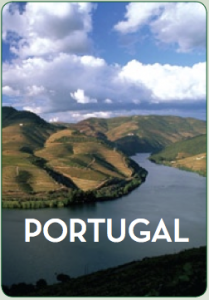TRAVEL

Digi
As a country with seven tourism regions, and more than 300 miles of beaches, there is a lot more to Portugal than one might think: flowers are in bloom in the warm hillsides of Madeira and the Algarve. Temperatures climb into the 70s, and airfares are still quite affordable. In fact, four airlines now fly directly to Portugal from the United States.
Getting to Portugal
1. Year-round daily flights are available to Lisbon from Newark on TAP Portugal or Continental Airlines. 2. TAP Portugal also offers year-round direct flights from Newark to Porto twice a week. 3. from Philadelphia on U.S. Airways. 4. from Boston on SATA/ Azores Express.
The SATA/Azores Express flights from Boston also serve Ponta Delgada on the Azores island of São Miguel and Lajes on the Azores island of Terceira. Additional seasonal flights on SATA/Azores Express are available to Lisbon from Providence, Rhode Island and Oakland, California.
Madeira
Discovered in 1420, Madeira is a semi-tropical island 800 miles southwest of Lisbon in the Atlantic Ocean. The island is blessed with a perfect climate: always warm in winter and never too hot in summer. Funchal, the capital of Madeira, has a romantic air thanks in part to constant sunshine, a bay surrounding the city, botanical gardens, elegant resorts and fascinating landscapes. World-class hotels rise on black cliffs, and casinos, nightclubs, and restaurants make any night a night to remember. Madeira’s steep topography gives the island six distinct climate zones, changing with each rise in altitude. The landscape also contributes to some of the best hiking in Europe, with trails that follow water channels (called “levadas”) past waterfalls and spectacular views. Madeira’s nearby smaller island, Porto Santo, has a coast covered with dunes and vineyards, and shows off an incredible six mile-long sandy beach.
Facts
CAPITAL CITY
Lisbon, also called Lisboa, boasting a population of two million.
POPULATION
10.6 million, about the same size as the state of Pennsylvania.
LANGUAGE
Portuguese. English is also quite common.
TIME ZONE
Five hours ahead of Eastern Standard Time (EST) in the United States. The Azores are four hours ahead of the EST.
CURRENCY
Portugal uses the Euro (€). All banks have automatic exchange machines (Multibanco).
CHIEF CITIES
Largest: Lisbon and Porto
Regional cities: Aveiro, Beja, Braga, Bragança, Castelo Branco, Coimbra, Évora, Faro, Guarda, Leiria, Funchal, Ponta Delgada, Portalegre, Santarém, Setúbal, Viana do Castelo, Vila Real and Viseu.
Portugal remained in a state of flux during much of the 19th and 20th centuries. An invasion by Napoleon was narrowly repelled, and when a Portuguese king fled to the colony of Brazil, the country experienced a civil war in the 1830s. A constitutional monarchy soon took control and passed progressive social reforms until they were toppled by another revolution in 1901. But in 1926, a military coup changed the power structure once again. António Salazar took control as prime minister, running a dictatorship that survived until 1974. While Salazar’s rule wasn’t as repressive as some in neighboring countries, thousands of people were imprisoned and thousands more left for better economic opportunities abroad. In 1974, military forces overthrew the dictatorship and ended all hostilities in Portuguese Africa, thus influencing a new Republic. Twelve years later, a democratic Portugal joined the European Union.

